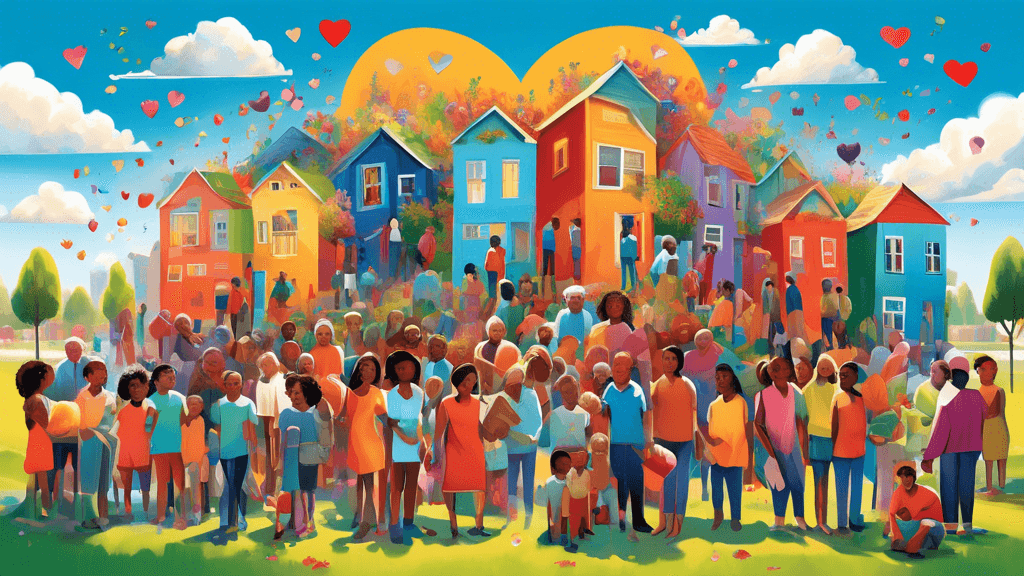
Rebuilding Hope: Stories of Resilience in the Aftermath of Natural Disasters
Share
The Power of Resilience: Overcoming the Challenges Posed by Natural Disasters
In the wake of natural disasters, the devastation to landscapes and communities can often seem insurmountable. However, amidst the ruins, stories of courage, resilience, and hope consistently arise. These tales not only inspire, but also teach valuable lessons on rebuilding and strengthening communities against future calamities.
The Impact of Natural Disasters
Natural disasters strike indiscriminately, wreaking havoc on developed and developing nations alike. The consequences can be catastrophic, interrupting lives, destroying infrastructure, and displacing communities. Recent data highlights the staggering impact of these events:
- On average, natural disasters displace 26.4 million people each year, according to the Internal Displacement Monitoring Centre.
- Economic losses from global natural disasters have continued to climb, reaching billions annually, reports the United Nations.
With the scale of destruction often monumental, the initial response can feel overwhelmingly bleak. However, the human spirit’s resilience begins to shine through as recovery efforts commence.
Stories of Resilience and Recovery
In the face of adversity, communities around the world have shown an incredible capacity to bounce back. Here are a few notable examples:
Rebuilding in Nepal: After the devastating 2015 earthquake, which killed nearly 9,000 people and destroyed over 600,000 structures, Nepal has been slowly, but steadily, rebuilding. Local communities, supported by global aid, have focused on creating more earthquake-resistant buildings. “The resilience shown by the people of Nepal is nothing short of heroic,” noted a disaster recovery specialist.
Renewal in Puerto Rico: Post-Hurricane Maria in 2017, the entire island of Puerto Rico faced a blackout, the biggest in U.S. history. The rebuilding process has been arduous but highlighted by innovative projects aimed at creating sustainable, renewable energy solutions. Community leaders have been pivotal, ensuring that recovery efforts are inclusive and equitable.
Flood Resistance in the Netherlands: Known for its battle against the sea, the Netherlands has not only developed sophisticated flood defense systems but also implemented proactive community resilience training programs. “We must be prepared for when, not if, the next flood occurs,” states a Dutch environmental expert.
Lessons for Future Disaster Preparedness
The stories highlighted not only reflect immense human spirit and determination but also serve as crucial learning points:
- Community Engagement: Active participation from local communities is essential. Their involvement in planning and implementation helps ensure that the solutions are sustainable and culturally appropriate.
- Investment in Infrastructure: Building and maintaining robust infrastructure capable of withstanding disasters is crucial. This includes not just physical structures, but also communication and transportation networks.
- Environmental Conservation: A deeper commitment to environmental conservation can mitigate the impact of natural disasters. Protecting mangroves, wetlands, and forests, for example, plays a critical role in shielding coastlines and managing floodwaters.
As Dr. Jane Goodall famously said, “What you do makes a difference, and you have to decide what kind of difference you want to make.” The resilience shown by disaster-struck communities is a testament to the human capacity to not just endure but emerge stronger.
Conclusion: A Call to Action
The journey of recovery and resilience is long and fraught with challenges, but it is also filled with hope and opportunities for growth. As we witness these awe-inspiring stories of resilience, let us too, be inspired to contribute in our own ways. Whether through supporting disaster recovery organizations, advocating for better policies, or simply by educating ourselves and others about disaster preparedness, every effort counts.
Remember, the next disaster is not a matter of if, but when. Will we be ready to not only face it but also to aid in the recovery that will follow? Let us resolve to be part of a world that bounces back faster and stronger, building hope through resilience.





